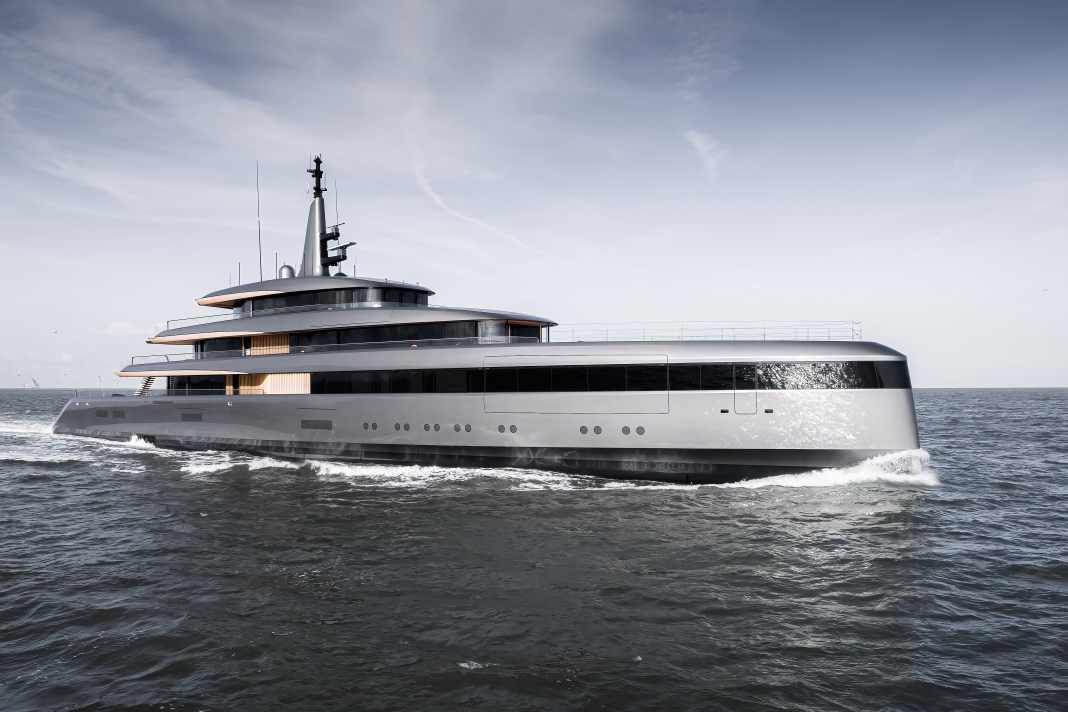84-metre "Obsidian": First Feadship with biofuel, batteries and bow lounge
Sören Gehlhaus
· 09.08.2023






Feadship revealed new details about the diesel-electric hybrid drive of the 84.20 metre vessel at the time of delivery. The "Obsidian" actually has a battery capacity of 4.5 megawatt hours - roughly equivalent to the annual electricity consumption of four people living in a detached house. In a clever design move, 560 battery modules are stored decentralised to the e-pods in a cooled room amidships on the tank deck, contributing to a low centre of gravity. At a speed of ten knots, the boat can travel up to 35 nautical miles purely electrically. At anchor, the batteries maintain the entire on-board power supply for 10 to 15 hours.
90 per cent less CO2 emissions
While the "Savannah" and "Lonian" Feadships are powered by 560 volts, "Obsidian" relies on a direct current system with 1000-volt architecture. The batteries are powered by two large and two small variable-speed generators. CAT C32 engines were used as the basis in each case, behind which permanent magnet generators were placed. During test drives, the biofuel HVO (Hydrotreated Vegetable Oil) flowed through the pipes, which reduced CO2 emissions by 90 per cent according to Feadship.
Asymmetry determines the layout
The interior is intended to be just as bold and modern as the lines suggest. RWD and Monk Design placed the dining area on the lower deck directly in front of the beach club, which means that when the ship's side is folded down, you are 75 centimetres above the surface of the water. An asymmetrical atrium staircase leads downwards. Most of the corridors and the pool on the aft deck follow this asymmetry. With the exception of the cabins, there should be no 90-degree angles in any of the interior spaces. A hidden staircase leads to the study.
Feadship constructs underwater anchors instead of forepeaks
There is a Nemo Lounge near the stern, which also functions as a cinema or classroom. Here, structural glass installed below the waterline allows views of the underwater world. Probably the biggest surprise awaits in the bow, a panoramic lounge with double-curved glass windows. Access is via a corridor on the main deck and the guest accommodation and tender garage. The hidden space could only be realised by dispensing with a forepeak; the two anchors slide out of the underwater hull once the hatches are opened.
